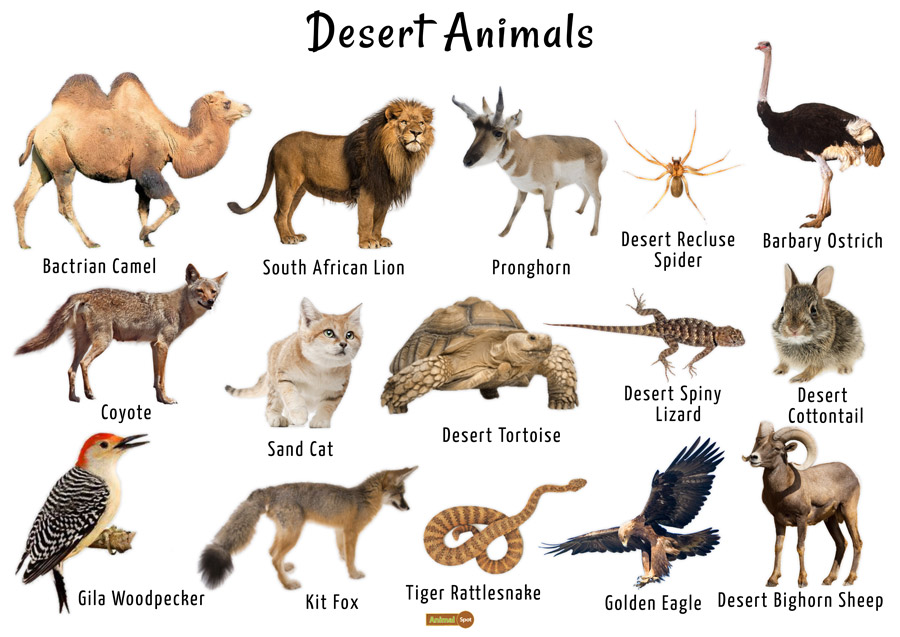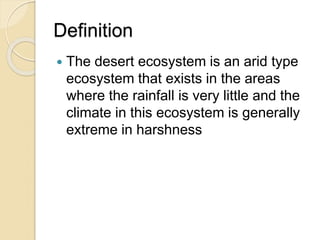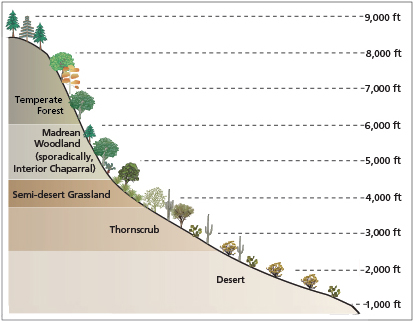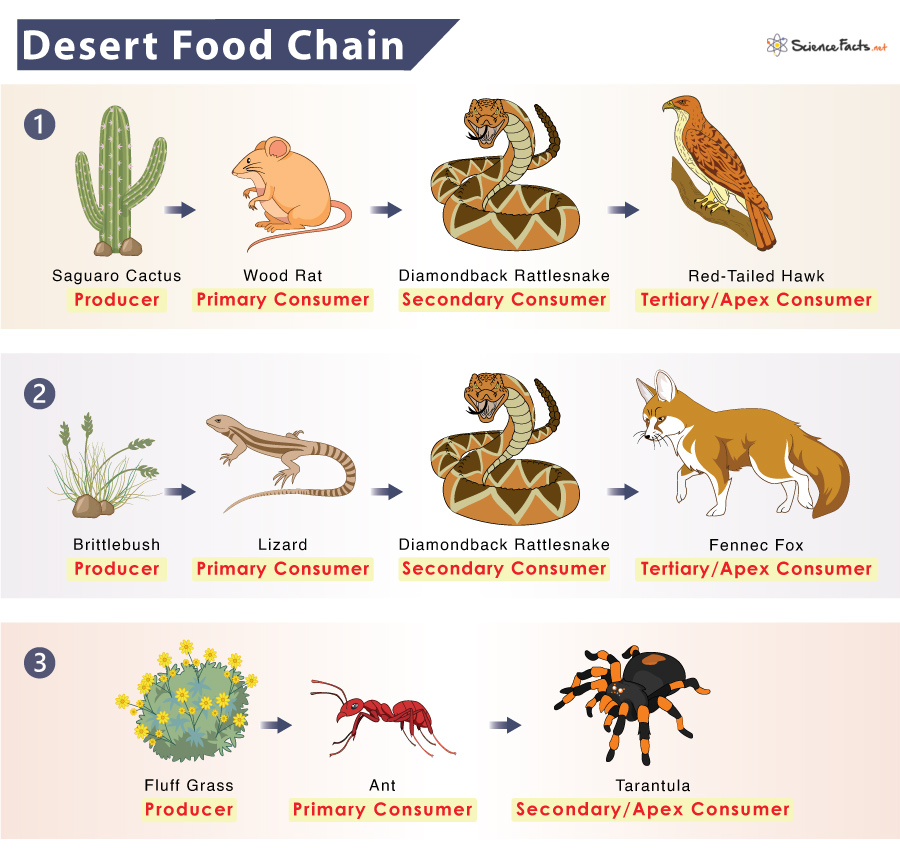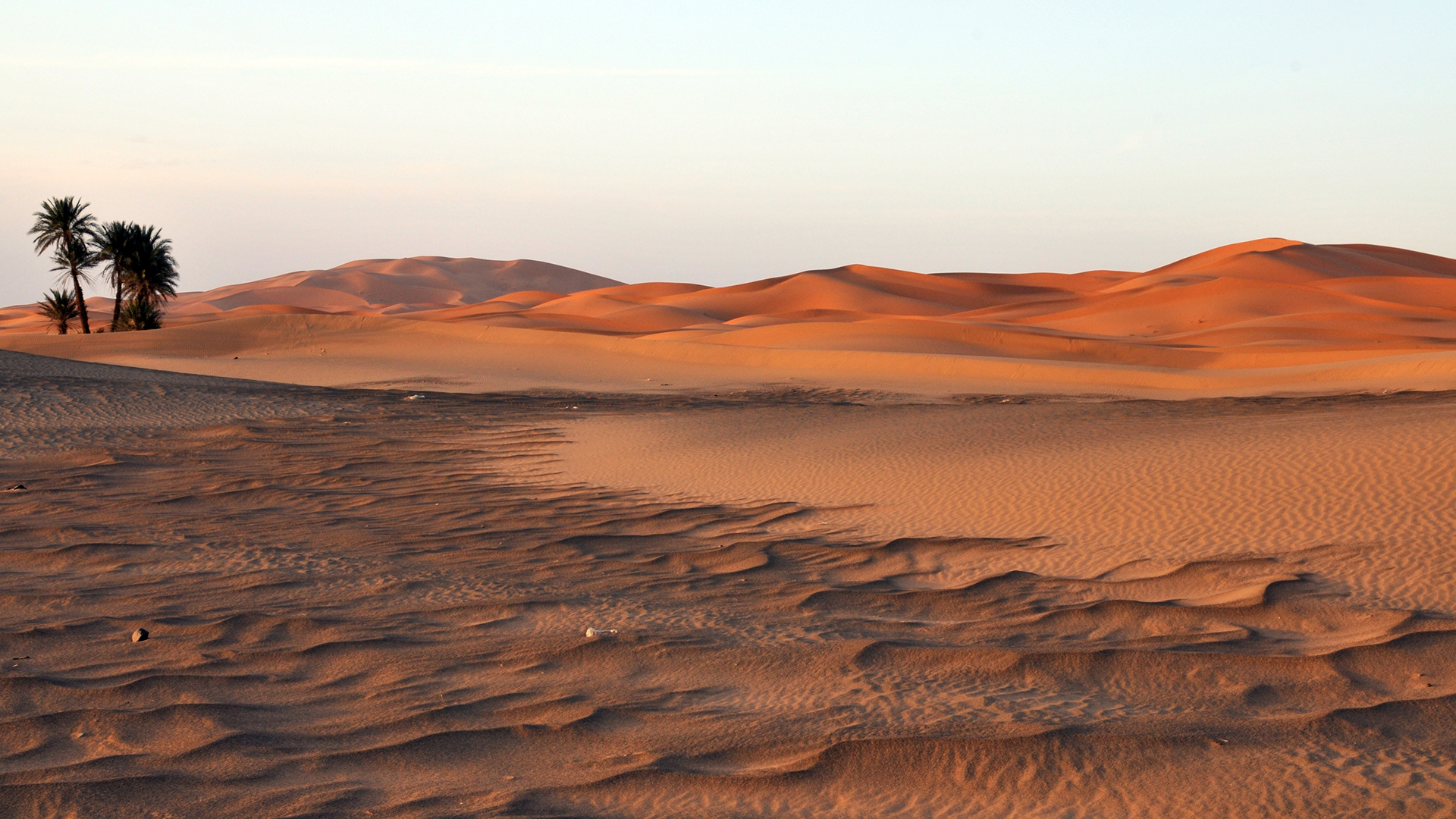Topic desert ecosystem: Explore the desert ecosystem, a fascinating realm where life thrives against the odds, showcasing nature"s incredible adaptability and resilience in extreme conditions.
Table of Content
- What are some examples of plants and animals found in the desert ecosystem?
- What is a Desert Ecosystem?
- Types of Deserts: Hot and Cold
- Unique Flora and Fauna Adaptations
- Desert Climate and Weather Patterns
- Soil Composition and Vegetation
- Water Sources and Conservation Techniques
- YOUTUBE: Desert Ecosystems
- Human Life in Deserts
- Threats to Desert Ecosystems and Conservation Efforts
- Desertification: Causes, Effects, and Solutions
- Role of Deserts in the Earth"s Ecosystem
What are some examples of plants and animals found in the desert ecosystem?
Some examples of plants found in the desert ecosystem include:
- Saguaro cactus
- Joshua tree
- Barrel cactus
- Prickly pear cactus
- Creosote bush
- Yucca
- Desert marigold
- Ocotillo
Some examples of animals found in the desert ecosystem include:
- Rattlesnake
- Roadrunner
- Desert tortoise
- Kangaroo rat
- Fennec fox
- Scorpion
- Gila monster
- Camel
READ MORE:
What is a Desert Ecosystem?
A desert ecosystem refers to a biome characterized by low precipitation, scarce vegetation, and extreme temperatures. This unique environment hosts a diverse range of life forms that have adapted to survive under harsh conditions. Deserts cover about one-fifth of the Earth"s surface and can be found across the world, each with its distinct features.
- Low Rainfall: Deserts typically receive less than 25 cm (10 inches) of rain per year.
- Extreme Temperatures: Daytime temperatures can soar, while nighttime temperatures may drop significantly.
- Adaptations: Flora and fauna possess specialized adaptations to conserve water and regulate temperature.
- Soil: Desert soils are often sandy, rocky, and low in organic matter, but they can support life through various adaptations.
Despite their harsh conditions, deserts are ecosystems rich in biodiversity. They play a crucial role in the Earth"s ecology, affecting weather patterns and serving as habitats for remarkable species.
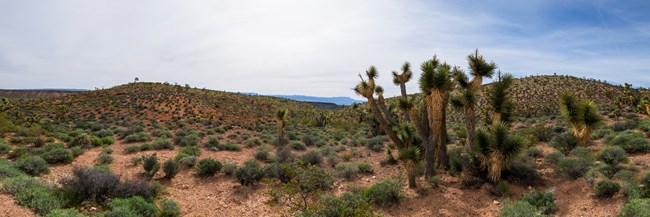
Types of Deserts: Hot and Cold
Deserts are not just vast stretches of sand; they vary greatly depending on their location and climate conditions. The two primary types of deserts are hot deserts and cold deserts, each offering unique landscapes and ecosystems.
- Hot Deserts: These deserts are characterized by high temperatures during the day and cooler nights. Examples include the Sahara in Africa, the Arabian Desert in the Middle East, and the Sonoran Desert in North America. They are known for their sand dunes, sparse vegetation, and diverse animal life.
- Cold Deserts: Found in higher latitudes and altitudes, cold deserts have low temperatures, especially in winter. The Gobi Desert in Asia and the Great Basin Desert in the USA are examples. These deserts experience snowfall, and their ecosystems are adapted to colder, sometimes freezing conditions.
Both hot and cold deserts play critical roles in the Earth"s environmental systems, supporting unique biodiversity and influencing global climate patterns. Despite their harsh conditions, deserts are home to a variety of life forms that have adapted to survive in extreme environments.
Unique Flora and Fauna Adaptations
Life in the desert requires resilience and innovation. The flora and fauna of desert ecosystems have evolved remarkable adaptations to survive in extreme conditions of temperature and water scarcity.
- Flora Adaptations: Desert plants, such as cacti, have thick, fleshy parts for water storage, deep root systems to reach underground water, and small or spiny leaves to reduce water loss. Some plants have adapted to have very short life cycles, germinating, flowering, and dying within the brief rainy season.
- Fauna Adaptations: Desert animals have developed various strategies to cope with the harsh environment. Many are nocturnal, being active at night to avoid daytime heat. Others, like the camel, can store water and fat, while smaller creatures might burrow underground to escape the heat. Reptiles utilize the sun for thermoregulation, and mammals often have specialized kidneys that conserve water.
These adaptations not only allow desert life to thrive but also create a complex ecosystem where each species plays a crucial role in maintaining balance. The ingenuity of life to adapt to such extremes is a testament to the resilience of nature.

Desert Climate and Weather Patterns
Deserts are renowned for their extreme climate and distinctive weather patterns, characterized by minimal rainfall, high daytime temperatures, and significant temperature drops at night. Understanding these patterns is essential for grasping how life adapts in these harsh conditions.
- Low Precipitation: Deserts typically receive less than 25 cm of rain annually, making water scarcity a defining feature. Rainfall, when it occurs, is often unpredictable and can be intense, leading to flash floods.
- High Daytime Temperatures: Solar radiation heats the ground directly, causing temperatures to soar during the day. In hot deserts, daytime temperatures can exceed 40°C (104°F).
- Cool Nights: Without clouds to trap heat, desert temperatures can drop sharply at night, sometimes by as much as 20-30°C (68-86°F), demonstrating extreme diurnal temperature variations.
- Wind Patterns: Deserts often experience strong winds due to the heating and cooling of the air. These winds can shape the desert landscape, moving sand to create dunes and eroding rocks.
These climate conditions and weather patterns not only define the physical landscape of deserts but also influence the types of life forms that can survive and thrive in these ecosystems.
Soil Composition and Vegetation
The soil and vegetation of desert ecosystems are uniquely adapted to the extreme conditions of their environment. Understanding the composition of desert soils and the types of vegetation that thrive in them offers insight into the resilience of desert life.
- Soil Composition: Desert soils are often sandy or rocky with low organic matter. They can be surprisingly fertile when water is available but are subject to erosion and salinity issues. The lack of moisture and organic material slows down the decomposition process, making nutrients less readily available.
- Vegetation Types: Desert vegetation has evolved to maximize water efficiency. Common adaptations include deep root systems to tap into underground water supplies, thick leaves or stems for water storage, and small or no leaves to reduce water loss through transpiration. This includes cacti, succulents, and hardy shrubs.
- Survival Strategies: Many desert plants have a dormant period during the driest times, springing to life after rainfall. Some plants, like annuals, complete their life cycle during short wet periods.
Despite the challenging conditions, the soil composition and vegetation of deserts form a symbiotic relationship that sustains the diverse ecosystems found within these arid regions.

Water Sources and Conservation Techniques
Water is a precious commodity in desert ecosystems, and both natural processes and human interventions have evolved to maximize its availability and conservation.
- Natural Water Sources: Despite their arid conditions, deserts have various water sources, including underground aquifers, seasonal rivers (wadis), and occasional rainfall. Plants and animals have adapted to utilize these sparse resources efficiently.
- Human Conservation Techniques: Humans living in desert regions have developed innovative methods to harvest and conserve water. These include ancient techniques like fog nets and dew collectors, as well as modern technologies such as solar-powered water condensers and efficient irrigation systems like drip irrigation to minimize water loss.
- Soil Moisture Conservation: Techniques such as mulching, terracing, and the use of water-retentive soil additives help conserve soil moisture and reduce evaporation, allowing for more sustainable agriculture in arid environments.
- Vegetation as a Water Conservation Strategy: Planting vegetation that requires less water and can provide shade reduces ground temperature and soil moisture loss. Native plants are particularly valued for their efficiency in using available water and for stabilizing soil.
The conservation of water in desert ecosystems is critical for the survival of both human populations and the natural environment, highlighting the importance of sustainable practices in these sensitive areas.
Desert Ecosystems
\"Immerse yourself in the captivating world of ecosystems that showcase the beauty and interconnectedness of nature. Discover the harmonious dance between plants, animals, and their environment through this awe-inspiring video that will leave you in awe of the wonders of our planet.\"
What is a desert?
\"Journey into the untamed wilderness of the desert, where survival is a constant battle against the harsh elements. Watch this exhilarating video that uncovers the secrets of the desert\'s unique ecosystem, revealing the resilient creatures and breathtaking landscapes that make this arid wilderness so captivating.\"
Human Life in Deserts
Deserts, despite their harsh conditions, have been home to human communities for thousands of years. These communities have developed unique ways of living that are deeply intertwined with the desert environment.
- Nomadic Tribes: Many desert inhabitants lead nomadic lifestyles, moving with the seasons to find water and grazing for their animals. This mobility is a key strategy for surviving in an environment where resources are scarce and sporadically distributed.
- Agricultural Innovations: Desert dwellers have developed agricultural techniques adapted to arid conditions, such as oasis farming, where underground water or natural springs are used to irrigate crops in fertile patches amidst the desert.
- Architectural Adaptations: Traditional desert architecture features thick walls made of mud-brick, reflective light-colored surfaces, and small windows to keep interiors cool. Modern designs often incorporate these principles alongside sustainable technologies to enhance comfort and efficiency.
- Cultural Richness: Deserts are not just physical landscapes but cultural ones, too. They have inspired a rich tapestry of art, music, and storytelling that reflects the beauty and challenges of desert life.
- Adaptation and Resilience: Living in the desert requires a deep understanding of the environment and a capacity to adapt to its demands. The knowledge and practices developed by desert communities are invaluable lessons in sustainability and resilience.
The resilience of human communities in deserts showcases the incredible ability of humans to adapt to and thrive in even the most challenging environments.

Threats to Desert Ecosystems and Conservation Efforts
Desert ecosystems, while resilient, face significant threats from both natural processes and human activities. Addressing these threats is crucial for preserving these unique landscapes and their biodiversity.
- Climate Change: Rising temperatures and shifting precipitation patterns exacerbate water scarcity, affecting both desert life and human communities.
- Desertification: Unsustainable land use, such as overgrazing and deforestation, can turn marginal areas into desert, expanding desert landscapes at the expense of more productive ecosystems.
- Water Resource Exploitation: The overuse of groundwater for agriculture and urban development can deplete aquifers, leaving less water available for natural desert habitats.
- Pollution: Air and soil pollution from mining and industrial activities can damage delicate desert ecosystems, affecting both flora and fauna.
- Biodiversity Loss: The introduction of non-native species, habitat destruction, and hunting can lead to a loss of biodiversity, with long-term consequences for the health of the ecosystem.
Conservation efforts are underway to address these threats, including the establishment of protected areas, sustainable resource management practices, and efforts to combat climate change and desertification. Education and community involvement are also key components of successful conservation strategies, ensuring that both people and nature can thrive in desert environments.
Desertification: Causes, Effects, and Solutions
Desertification is a critical environmental issue that transforms fertile land into desert as a result of natural and human-induced factors. Understanding its causes, effects, and potential solutions is essential for mitigating its impact.
- Causes:
- Overgrazing by livestock, which removes vegetation cover and leads to soil erosion.
- Deforestation, which reduces the amount of moisture retained in the soil.
- Unsustainable farming practices that deplete soil nutrients.
- Climate change, which increases drought frequency and severity.
- Effects:
- Loss of biodiversity, affecting ecosystem services and resilience.
- Decreased agricultural productivity, leading to food insecurity.
- Water scarcity, exacerbating drought conditions and impacting human and animal populations.
- Increased CO2 levels due to loss of vegetation, contributing to global warming.
- Solutions:
- Sustainable land management practices, such as crop rotation, agroforestry, and controlled grazing.
- Reforestation and afforestation efforts to restore soil health and moisture retention.
- Water conservation techniques, including rainwater harvesting and efficient irrigation systems.
- Community involvement and education to foster sustainable practices and land stewardship.
Addressing desertification requires a coordinated global effort, incorporating both local and international strategies to restore degraded lands and prevent further loss.
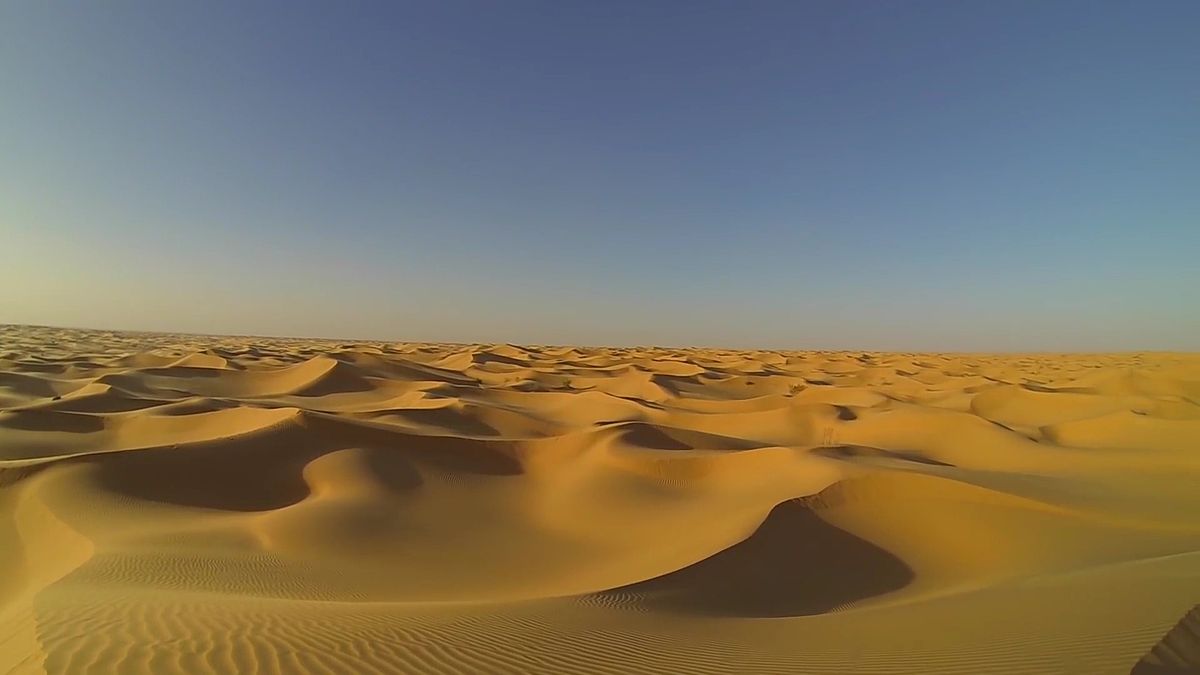
READ MORE:
Role of Deserts in the Earth"s Ecosystem
Deserts play a crucial role in the Earth"s ecological balance, contributing to biodiversity, climate regulation, and even human culture and innovation. Understanding the importance of deserts underscores the need for their conservation.
- Biodiversity Hotspots: Despite harsh conditions, deserts are home to a wide range of unique plant and animal species that have adapted to survive in extreme environments. These species are integral to the ecological web, offering insights into resilience and adaptability.
- Climate Influence: Deserts affect global climate patterns by reflecting sunlight back into the atmosphere, which helps regulate Earth"s temperature. The sand and dust carried by desert winds can also fertilize distant regions and oceans, promoting plankton growth.
- Water Cycle Contribution: Deserts play a role in the global water cycle by providing heat that aids in the formation of rain clouds. Although they receive little precipitation, the evaporation and condensation processes are vital components of global weather dynamics.
- Cultural and Scientific Value: Human cultures have thrived in desert environments for millennia, developing unique ways of living that are rich in tradition and ingenuity. Deserts also offer sites for scientific research, from astronomy to climate change studies, due to their clear skies and minimal light pollution.
- Natural Resources: Deserts are sources of valuable minerals and other natural resources, including solar energy potential, underscoring the importance of sustainable management to avoid overexploitation.
The role of deserts extends far beyond their physical boundaries, influencing global ecosystems, climate patterns, and human societies in profound ways.
Exploring desert ecosystems reveals the remarkable resilience of life and the intrinsic value of these landscapes. Preserving them is essential for maintaining Earth’s biodiversity and ensuring a sustainable future for all species.

